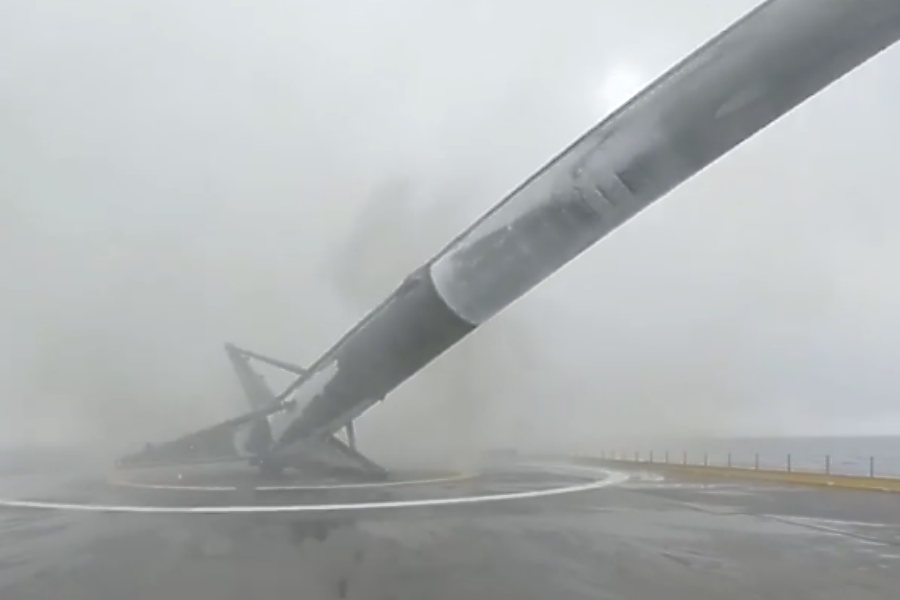SpaceX rocket crashes on landing: What went wrong?
Loading...
Though private aerospace company SpaceX successfully launched an ocean-monitoring satellite from California into Earth’s orbit on Sunday, the rocket that carried it exploded into pieces after it landed on a floating barge in choppy seas about 200 miles west of San Diego.
According to company founder and CEO Elon Musk, the lockout collet on one of the rocket's four legs didn't latch, causing it to tip over after landing. He said the "root cause may have been ice buildup due to condensation from heavy fog at liftoff," in an Instagram post accompanying the video of the landing.
The failed landing of the Falcon 9 rocket is a setback for the company, whose mission is to reduce future launch costs by reusing the multi-million dollar rockets instead of having them fall into the ocean as is currently done.
SpaceX’s two previous attempts to land a rocket on a barge in the Atlantic have failed, though last month the company successfully landed a rocket vertically at Cape Canaveral, Fla., after dropping satellites into orbit.
Sunday morning Falcon 9 launched from Vandenberg Air Force Base to deliver the Jason-3 satellite into orbit, about 830 miles above the Earth. The new satellite will track the rate of global sea-level rise and help more accurately forecast the strength of tropical cyclones that threaten America’s coasts, said the National Oceanic and Atmospheric Administration (NOAA).
"Jason allows us to get the big picture in terms of sea-level change in the years to come," Laury Miller, Jason-3 program scientist, told the Associated Press.
The satellite will help detect the weather-altering El Nino condition and its opposite, La Nina. It will also measure global sea level rise, continuing an unbroken record of more than two decades of sea level measurements from other satellites in orbit. It will also help forecast the strength of hurricanes and other severe weather, and track ocean conditions critical for the shipping industry.
Jason-3 is a project of NOAA, NASA, the French space agency Centre National d'Etudes Spatiales, and the European Organization for the Exploitation of Meteorological Satellites.
It will join, and ultimately replace, Jason-2, which has been in orbit since 2008. The program began with the satellite Topex-Poseidon, which operated from 1992 to 2006, and revolutionized our understanding of the role of ocean temperature on climate. Its successor, Jason-1, operated from 2001 to 2013.
This report contains material from the Associated Press.





